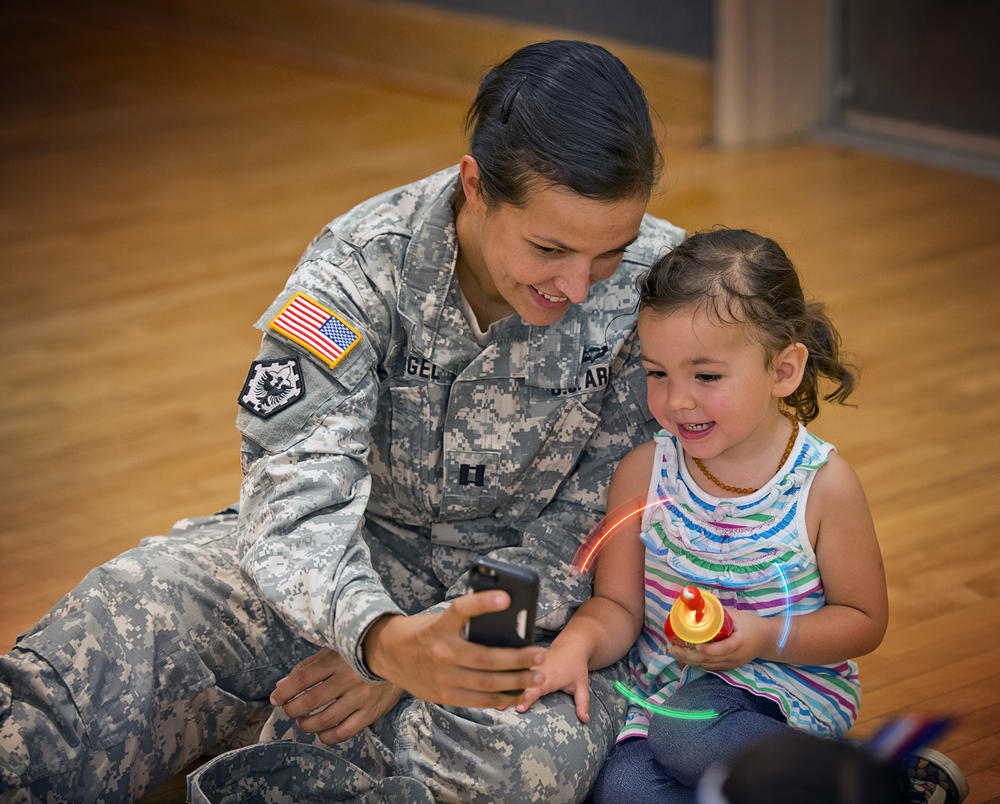
Caption
A military family has fun at the Sesame Street/USO Experience for Military Families at Fort Benning, Georgia, in 2014.
Credit: Dave Gatley
LISTEN: About 1 in 8 families of active-duty soldiers and airmen in Georgia used a food bank or pantry to make ends meet. That’s according to new research from the University of Georgia. GPB’s Ellen Eldridge reports.

A military family has fun at the Sesame Street/USO Experience for Military Families at Fort Benning, Georgia, in 2014.
Georgia has one of the nation’s largest military populations. But while most families can make ends meet without assistance, a new survey shows about 13% are receiving help with food.
Researchers at the University of Georgia surveyed more than 8,000 enlisted families with young children, who were applying for child care support assistance in 2021 through a partnership with the National Military Family Association.
They wanted to find out how many military families were using charitable food distribution resources, the study's lead author and assistant professor at UGA, Catherine O'Neal, said. The result was that 13% reached out for support, and that number is an undercount.
"And that's really important, study co-author Mallory Lucier-Greer said. "You know, I would like to continue to dig in (and find out), 'how did you know about this resource? You know, was it a commander that said, hey, do you know about this happening over there?"
The odds of a family needing help increases 35% with each new child, O'Neal said.
Previously published research shows a quarter of active duty military families struggle with some level of food insecurity, which means lacking access to enough food for each person in a household to live a healthy life.
"There is that disconnect between who is in need and who is utilizing resources," O'Neal said.
Next, they wanted to look at some basic demographic differences, and see whether groups' use of food distribution services correlated to service rank, race, ethnicity, or the number of children in a family.
Asian, Black and multiracial families were one and a half times more likely to have used a food bank than white families, according to the study. Additionally, soldiers and their families were 131% more likely to have used charitable resources than Air Force families.
Despite what the military pays for housing, some families said it isn’t always enough to live in more expensive cities with a saturated housing market.
Two-income families were 27% less likely to use a food bank than single-earner households, but many families, both military and civilian, continue to feel the effects of rising costs and inflation, O'Neal said.
But it’s also difficult for partners to hold down a job when the family moves every couple of years, which can also be expensive, Lucier-Greer said.
She said a multifaceted solution is required, certainly at the individual level.
"That's why there's such a push — at least from us and others, too — about unit leaders and their ability to recognize service members who might be potentially in need," O'Neal said. "Identify those around you who might need help. Building that bridge, making those connections from both ends."